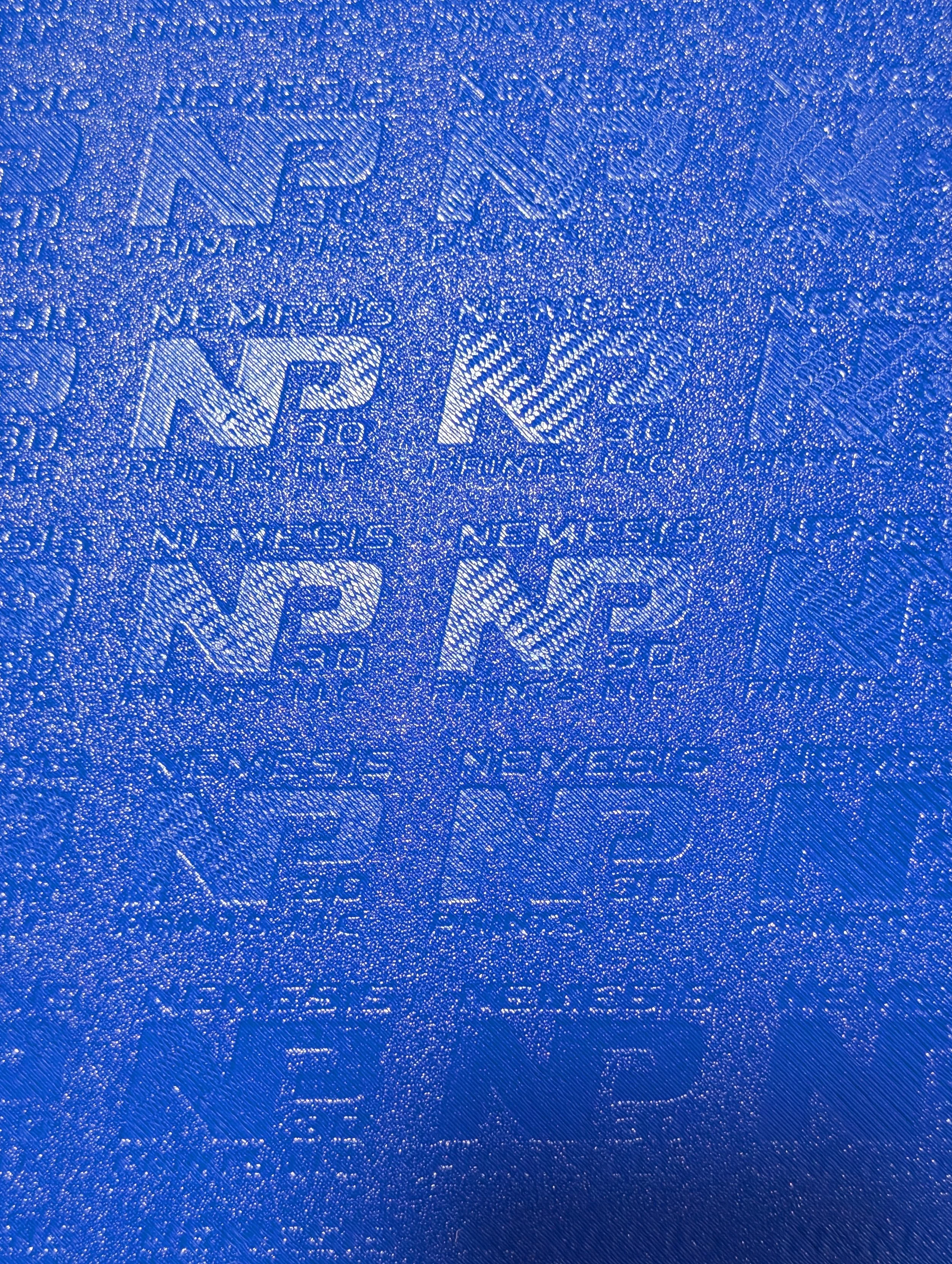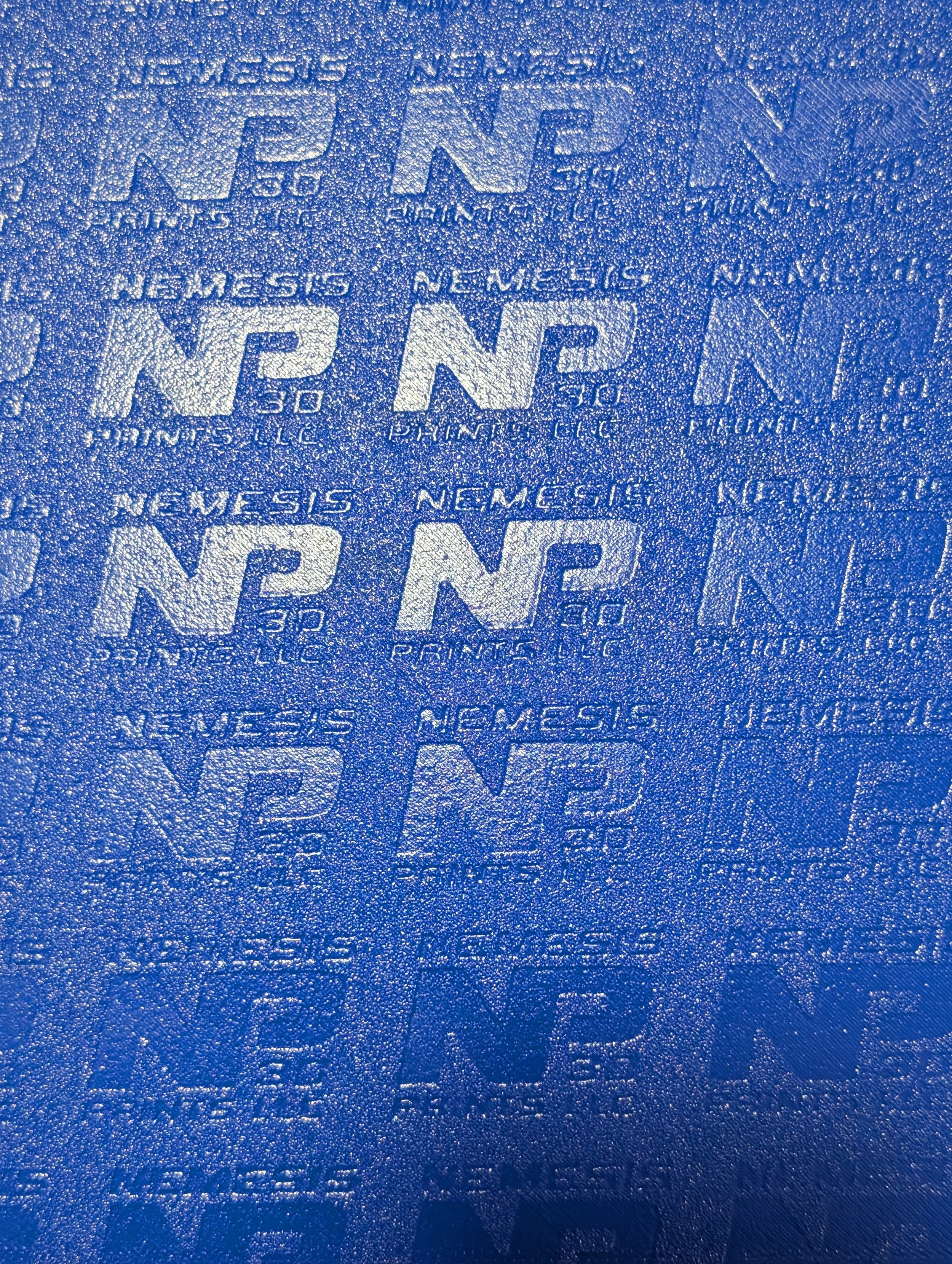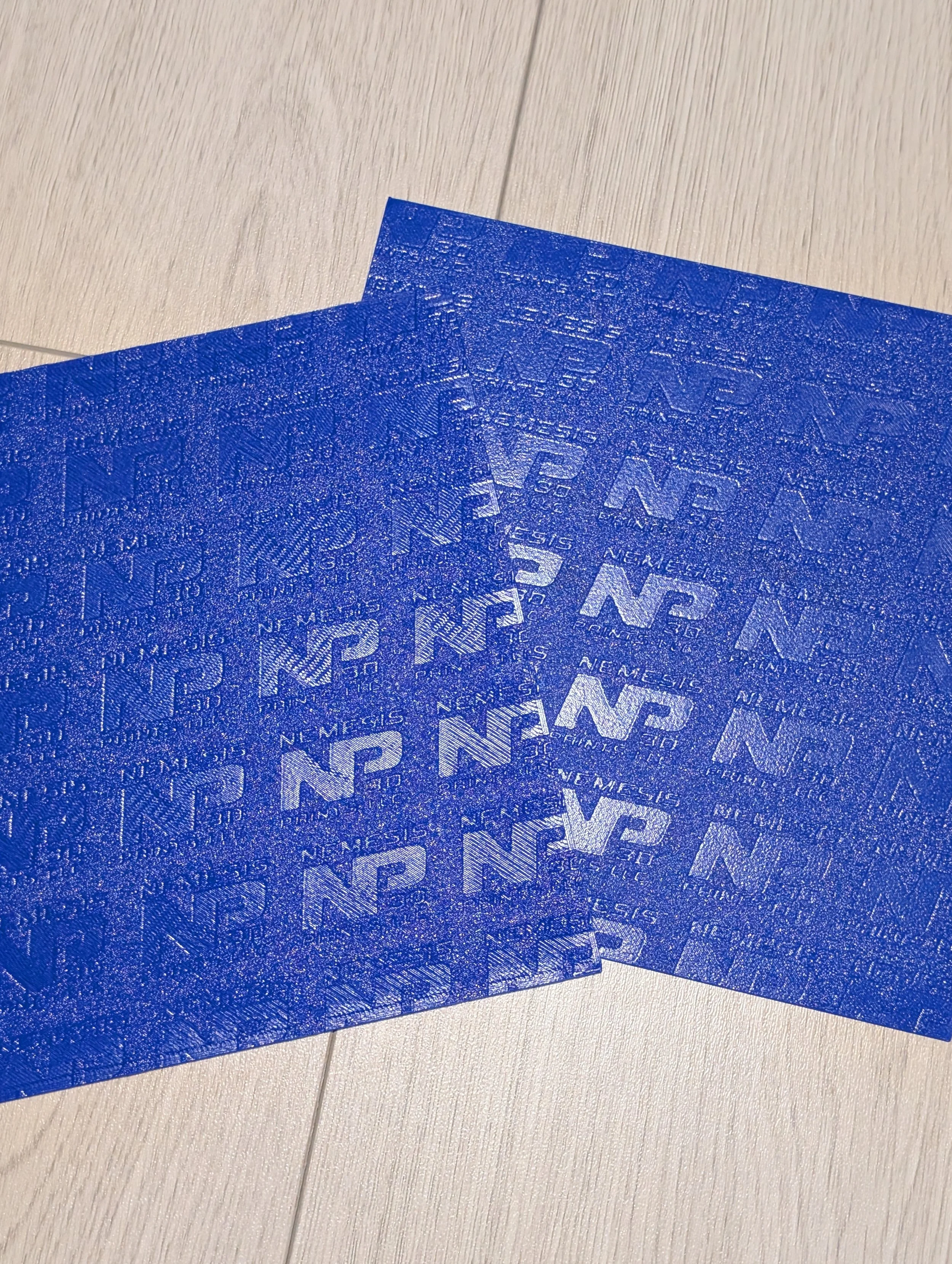Custom PEI Plates - Plate Care & FAQs
How to clean your plate
We suggest either warm water and dish soap, or Isopropyl Alchohol (IPA).
Material compatibility
Our custom textured PEI sheets have been tested to work with many materials ranging from standard PLAs to engineering filaments like ABS, ASA, and PACF.
If you are printing TPU or PETG, you should use a thin layer of glue or another release agent to prevent the high adhesion from damaging the build plate or the coating.
First layer issues
Depending on your printer, you may need to adjust your first layer height, z-offsets and/or flow rate. You must always run a new bed levelling procedure when swapping to a custom plate. Each plate is handmade and there can be slight variations in coating thickness. Artwork designs can also affect bed levelling routines.
Typically, most plates work out of the box. For example, on Bambu printers, we’ve had best results using the standard settings and 0.2mm first layer heights. Setting this first layer height value too high can sometimes make imprints worse (see below).
Using 0.3mm first layer heights can lead to ugly imprints
Using 0.2mm first layer heights can make imprints better
We recommend starting with your printer default values. If you encounter first layer issues as shown in the images below, try increasing the z-offset slightly. For example, we have had good success on the Bambu Lab H2D by changing from G29.1 Z{-0.02} to G29.1 Z{0} and on the Bambu Lab X1/P1 changing from G29.1 Z{-0.04} to G29.1 Z{-0.01}.
Bad first layers using default (left), better with adjusted z-offset (right)
Bad first layers using default (left), better with adjusted z-offset (right)
Insufficient adhesion
In the rare case that you experience poor adhesion, clean the plate and try again. If this still does not help, you can apply an adhesion aid like glue stick or increase the bed temperature.
Our thick coatings are a bit less sticky than standard PEI, so very small parts on large coating surfaces may need an adhesion aid to stick reliably.
Standard bed temp 55C (top), increased bed temp 65C (bottom)
Standard bed temp 55C (right), increased bed temp 65C (left)
Too much adhesion
In some cases, you may experience very strong adhesion and parts may be difficult to remove from the plate. This can vary depending on your filament and print settings.
We recommend tuning print settings (less squish, lower temp) or using a release layer like glue stick or Windex for materials like PETG which have very strong adhesion to PEI.
Too much adhesion can damage the coating and textured PEI.
Using metal tools or scrapers to remove parts
Do not use metal tools or scrapers on our build plates as it can damage the plate and the coating applied. This is especially true for thick coated plates, where the coating sticks out from the surface of the plate and can catch on tools and get damaged. Because the coating is bonded directly to the textured PEI, damage of the coating can result in damage of the PEI.
When to remove prints
Always wait for your plate to cool down before part removal. Parts should either self release, or require minor flexing of the plate to remove. Removing parts while the plate is still warm can damage the coating and the plate.
Expected lifetime of plates
This is very hard to estimate, as it depends on so many factors such as print settings, filament type and manufacturer, care of plates, and part removal techniques. Textured plates are still considered consumables, but we expect that with proper care and handling, these plates should last a similar lifetime to other textured PEI plates.
Plate warranty
Because these are custom products, and there are many factors out of our control which affect plate lifetime, we cannot offer warranty on these items.
Custom sizes
We can technically accommodate sizes up to 525x525mm and other non common sizes. However, these will be subject to MOQs as we are trying to limit the number of plate types we have to accommodate. Contact us for more information.







